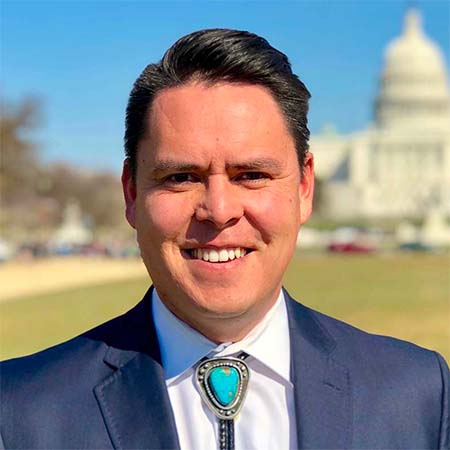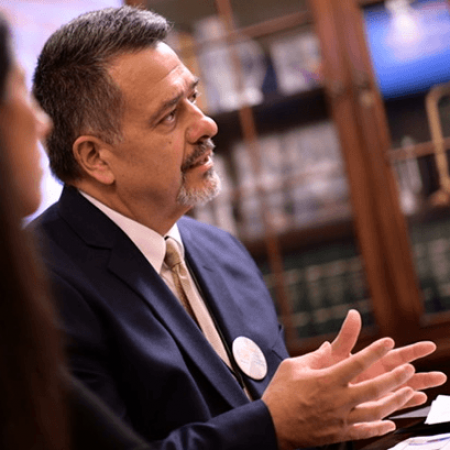In proposing changes to a key bank regulation, the Federal Reserve Board wants to improve the flow of capital to low- and moderate-income communities and Indian Country.

The proposal now out for public comment would enable banks to earn credits toward Community Reinvestment Act compliance for lending and other activities outside of their designated assessment area.
Among the hopes of the Federal Reserve and Native American financial organizations is that changes in the federal law will lead banks to do more lending in Indian Country, where access to capital and credit has traditionally lagged.
“This could be, and it should be, an opportunity to increase investment in Indian Country,” said Jackson Brossy, executive director of the Washington, D.C.-based Native CDFI Network that represents community development financial institutions that work in Indian Country.
Congress enacted the CRA in 1977 to encourage financial institutions to lend to moderate- and low-income neighborhoods.
Banks today get credit each year for about $500 billion that applies to their compliance with the CRA, although the program “really wasn’t designed with Indian Country in mind,” Brossy told Tribal Business News. That could change with the reform proposal that the Federal Reserve Board takes public comment on until Feb. 16, 2021.
“If we’re able to fix that and if we’re able just to get a sliver of that money running through (the CRA) and give banks incentives to invest in Indian Country, there could be big change, and we’re hopeful for that,” he said. “If it is designed well, it could make a big difference.”
‘UNIQUE OPPORTUNITY’
The Federal Reserve Board on Sept. 21 unanimously approved issuing an advanced rulemaking notice for a change in CRA rules. The proposal represents the first time in 25 years the Federal Reserve Board proposed a substantial reform in CRA rules, according to Lael Brainard, a member of the Federal Reserve’s Board of Governors.
In a November address to the National Congress of American Indians, Brainard said that a “modernized CRA should improve credit access and the availability of community development financing.”
“As we embark on CRA reform to strengthen the law’s core purpose, we have a unique opportunity to design a regulation that better addresses the needs of individuals and communities in Indian Country,” Brainard said. “The board’s proposal makes clear that a bank in any part of the country could receive credit for community development activities in Indian Country.”
Proposed changes specifically would allow banks to receive CRA credit for eligible activities such as retail and commercial lending in Indian County and outside of their assessment areas, she said. As well, banks could receive CRA credits for investments in affordable rental housing, broadband internet access, “or building community and elder centers in rural areas and other areas of persistent economic distress,” according to Brainard.
Proposed revisions also “better support mission-focused partners,” such as banks investing in Native CDFIs that work in Indian Country, “to address challenges in credit access and wealth building,” she said.
“The Federal Reserve has consistently heard that bank partnerships with experienced CDFIs can play an important role in helping banks more effectively make Indian Country loans and investments,” Brainard said.
SERVING ‘UNBANKED’ MARKETS
As the Federal Reserve seeks public comment, the Native CDFI Network urges coupling rule changes with a “massive investment in education around the CRA,” Brossy said. An April study by the Native CDFI Network indicated that more than three-quarters of member organizations lack any partnership with banks that resulted in CRA credits, he said.
Education and training for banks and Native CDFIs about rule changes could lead to “significant investments,” said Brossy, who hopes for a final rule that allows banks to receive CRA credits for equity or similar investment in Native financial institutions.
“Our goal would be to have banks provide equity-like investments in Native CDFIs to the tune of $1 million or $2 million to $5 million per CDFI,” he said. “If there are 70 CDFIs out there, we’re looking at, hopefully, a $100 million investment that we would like to see in Native CDFIs.”
In her address to the NCAI, Brainard cited how 16 percent of American Indians and Alaska Natives were “unbanked” as of 2019, and how survey data show that just one in three Native Americans has a strong or very strong relationship with a lender.
That’s partly because of a comparative lack of bank offices in Indian Country. Counties in the U.S. that are majority Native American have three bank offices on average, which compares to nine in counties that are not in metropolitan areas, and an average of 26 for all counties in the U.S., Brainard said.
In lending, the per-capita amount of loans for small businesses and farms under the CRA in Census tracts that were majority Native American or Alaska Native “was less than half of what it was majority-non-Hispanic White areas,” she said.
“These data make it clear that we still have a long way to go in improving access to banking services and capital in Indian Country,” Brainard said.
‘LONG-TERM, PATIENT CAPITAL’
 Peter Upton, executive director of Native 360 Loan Fund Inc. Courtesy photo.Proposed changes to the CRA are “long overdue and much needed for Indian Country,” said Peter Upton, executive director of the Grand Island, Neb.-based Native 360 Loan Fund Inc.
Peter Upton, executive director of Native 360 Loan Fund Inc. Courtesy photo.Proposed changes to the CRA are “long overdue and much needed for Indian Country,” said Peter Upton, executive director of the Grand Island, Neb.-based Native 360 Loan Fund Inc.
Upton, who also chairs the Native CDFI Network, would like to see changes that encourage flexibility and long-term “patient capital” that allows organizations to do larger loans for longer terms, perhaps up to 30 years, giving individuals and businesses greater access to long-term debt.
“Additional capital for larger projects is what we need,” Upton said. “What Indian Country needs and what my organization needs is long-term, patient capital. So much of the capital that is available, and even through the CRA, is generally short term. To really make an impact, I believe that we need to have long-term investments and just more patient capital with flexibility to serve the clientele that we do serve.”
Native 360 serves low- and moderate-income Native Americans in Nebraska, southeastern South Dakota and western Iowa, no matter their tribal affiliation. Native 360 provides loans ranging from $1,000 to $25,000 to individuals and small businesses.
One recent loan included providing credit at an affordable rate and flexible terms for a tree-trimming business in Nebraska to buy a buy boom lift so it could slowly expand. In another case, a Native artist who sells his wares in arts and crafts fairs received a $4,000 microloan to increase his inventory.
The organization also has been working to assist a young couple in South Dakota who are “true entrepreneurs.” He runs a tattoo business and she does screen printing and sells apparel, Upton said. They started their business in March, just as COVID-19 began to hit, shutting them down for three months.
Working with a grant from Wells Fargo Bank, Native 360 also has assisted small businesses to upgrade technology to help them through the pandemic, Upton said.